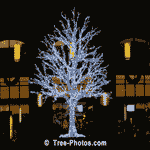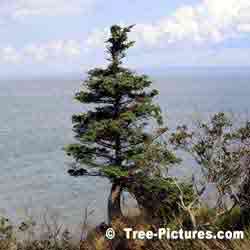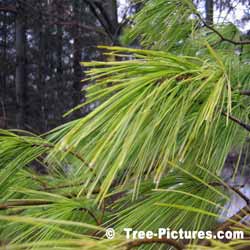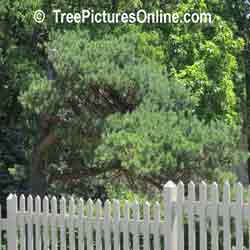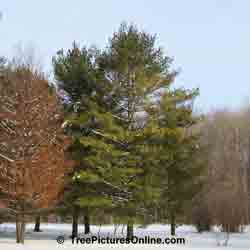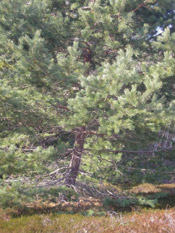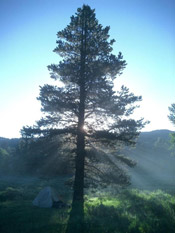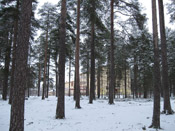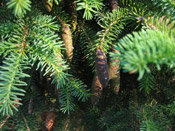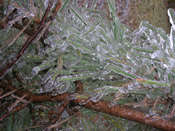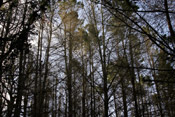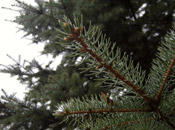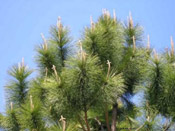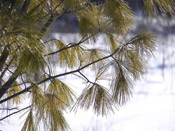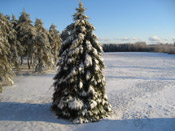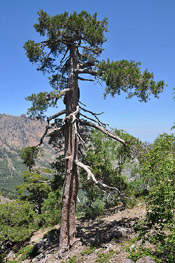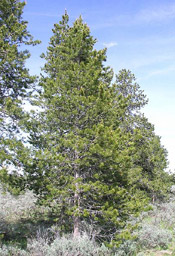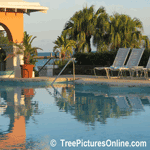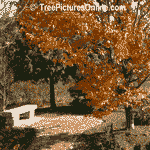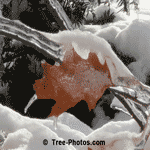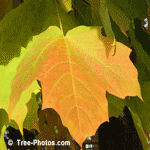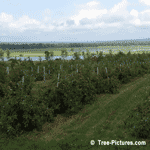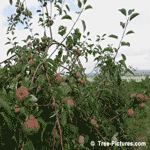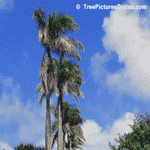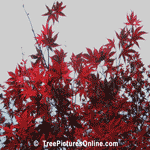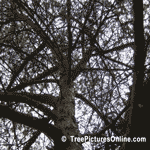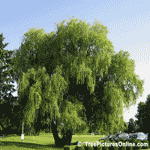Pine Tree Pictures
Welcome to our pine tree pictures category.
On this page you will find lots of nice pictures of pine trees.
You will also find a lot of wonderful information on pine trees, including information about the pine tree species, planting information, and much more.
This is valuable and useful information that can help you to learn more about the pine tree.
Pine Tree Pictures
To view each pine tree picture in full size just click on the pine tree photo you like.
Enjoy these pictures of pine trees.
Pines: Pine Tree Photo Gallery
Rugged Pine Tree |
White Pine Needles |
Scots Pine |
Tree Type: White Pine |
Scots Pine Species |
Tree Type: White Pine |
White Pine Sapling |
Pine Trees Photos 1 - Pine Trees Photos 2
Pine Tree Scientific Name: Pinus
Pine Tree Types; Different Types of Pine Trees
- Aleppo Pine
- Austrian Pine
- Bristlecone Pine
- Canary Island Pine
- Chir Pine
- Coulter Pine
- Eastern White Pine
- Foxtail Pine
- Gray Pine
- Italian Stone Pine
- Jack Pine
- Japanese Black Pine
- Japanese White Pine
- Jeffrey Pine
- Lacebark Pine
- Limber Pine
- Loblolly Pine
- Lodgepole Pine
- Longleaf Pine
- Luchu Pine
- Maritime Pine
- Mexican Weeping Pine
- Monterey Pine
- Mugo Pine
- Pitch Pine
- Pond Pine
- Ponderosa Pine
- Red Pine
- Sand Pine
- Scotch Pine
- Single Leaf Pinyon Pine
- Sugar Pine
- Tanyosho Pine
- Tenasserim Pine
- Torrey Pine
- Turkish Pine
- Two Needle Pinyon Pine
- Virginia Pine
- Western White Pine
- Whitebark Pine
Pines: Facts on the Pine Tree Species
Here is some general information on the pine tree.
Pines are trees in the genus Pinus, in the family Pinaceae. They make up the monotypic subfamily Pinoideae. There are about 115 species of pine, although different authorities accept between 105 and 125 species. Pine trees are the most common coniferous trees in the world.
Pines are native to most of the Northern Hemisphere. In Eurasia, they range from the Canary Islands, Iberian Peninsula and Scotland east to the Russian Far East, and in the Philippines, north to just over 70 degrees North in Norway, Finland and Sweden (Scots Pine) and eastern Siberia (Siberian Dwarf Pine), and south to northernmost Africa, the Himalaya and Southeast Asia, with one species (Sumatran Pine) just crossing the Equator in Sumatra to 2 degrees South.
Pines are evergreen, resinous trees (or rarely shrubs) growing 3 to 80 m tall, with the majority of species reaching 15 to 45 m tall. The smallest are Siberian Dwarf Pine and Potosi Pinyon, and the tallest is a 268.35-foot (81.79-meter) tall Ponderosa Pine located in southern Oregon's Rogue River-Siskiyou National Forest.
The bark of most pines is thick and scaly, but some species have thin, flaking bark. The branches are produced in regular "pseudo whorls", actually a very tight spiral but appearing like a ring of branches arising from the same point.
Many pines are uninodal, producing just one such whorl of branches each year, from buds at the tip of the year's new shoot, but others are multinodal, producing two or more whorls of branches per year. The spiral growth of branches, needles, and cone scales are arranged in Fibonacci number ratios. The new spring shoots are sometimes called "candles"; they are covered in brown or whitish bud scales and point upward at first, then later turn green and spread outward. These "candles" offer foresters a means to evaluate fertility of the soil and vigour of the trees.
Pines are long-lived, typically reaching ages of 100 to 1,000 years, some even more. The longest-lived is the Great Basin Bristlecone Pine, Pinus longaeva, one individual of which, at around 4,800 years old, is one of the world's oldest living organisms.
Pines are mostly monoecious, having the male and female cones on the same tree, though a few species are sub-dioecious with individuals predominantly, but not wholly, single-sex. The male cones are small, typically 1 to 5 cm long, and only present for a short period (usually in spring, though autumn in a few pines), falling as soon as they have shed their pollen. The female cones take 1.5 to 3 years (depending on species) to mature after pollination, with actual fertilization delayed one year. At maturity the female cones are 3 to 60 cm long.
Each cone has numerous spirally arranged scales, with two seeds on each fertile scale; the scales at the base and tip of the cone are small and sterile, without seeds. The seeds are mostly small and winged, and are anemophilous (wind-dispersed), but some are larger and have only a vestigial wing, and are bird-dispersed (see below). At maturity, the cones usually open to release the seeds, but in some of the bird-dispersed species (e.g. Whitebark Pine), the seeds are only released by the bird breaking the cones open. In others, the fire climax pines (e.g. Monterey Pine, Pond Pine), the seeds are stored in closed ("serotinous") cones for many years until a forest fire kills the parent tree; the cones are also opened by the heat and the stored seeds are then released in huge numbers to re-populate the burnt ground.
Pine Wood
Pines are among the most commercially important of tree species, valued for their timber and wood pulp throughout the world. In temperate and tropical regions, they are fast-growing softwoods that will grow in relatively dense stands, their acidic decaying needles inhibiting the sprouting of competing hardwoods. Commercial pines are grown in plantations for timber that is denser, more resinous, and therefore more durable than spruce (Picea). Pine wood is widely used in high-value carpentry items such as furniture, window frames, paneling, floors and roofing, and the resin of some species is an important source of turpentine.
Many pine species make attractive ornamental plantings for parks and larger gardens, with a variety of dwarf cultivars being suitable for smaller spaces. Pines are also commercially grown and harvested for Christmas trees. Pine cones, the largest and most durable of all conifer cones are craft favorites. Pine boughs, always appreciated, especially in wintertime for their pleasant smell and greenery, are popularly cut for decorations.
Some species have large seeds, called pine nuts, that are harvested and sold for cooking and baking.
The soft, moist, white inner bark (cambium) found clinging to the woody outer bark is edible and very high in vitamins A and C.
Pine trees are best known as Christmas trees and their pine cones are often used around the house for decorative purposes during the holiday season.
Thank you for visiting our Pine Tree Pictures, please come back soon for some more great tree pictures!
Impressive Tree Pictures
Collection of Impressive Tree Images
Trees: Recent Tree Photos, Pics & Images |
||
Palm Tree Pictures |
Beech Trees |
Palm Trees |
Oak Tree Gallery |
Christmas Trees |
Maple Trees |
Apple Tree Photo Gallery |
Apple Tree Images |
Palm Trees Gallery |
Japanese Maple Trees |
Pine Tree Gallery |
Willow Trees Category |
Tree wallpaper images can make beautiful backgrounds on your computer`s desktop. See our tree wallpaper photographs link in the left tree categories.
Thank you for visiting our Tree Pictures at TreePicture Online.com, please come back soon for more great tree photos!
Pictures Sites
Fireplace Pictures -
Tree Pictures -
Gazebo Pictures -
Symbols & Their Meanings
Resume Samples -
Church Pictures -
Manufactured Home Pictures
Natural Log Siding -
Shadow Puppets -
Caribbean Islands
Play Touch Games -
Waterfall Pictures
Make Hot Pictures - Job Application Forms
![]()


